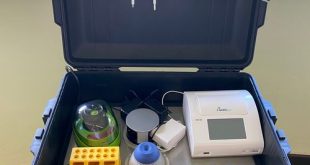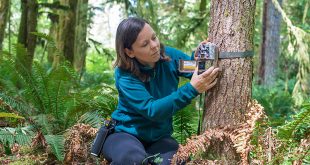Humankind’s best friend may very well be our champion in fighting COVID-19. According to University of California, Santa Barbara, professor emeritus Tommy Dickey and his collaborator, BioScent researcher Heather Junqueira, trained medical scent dogs can screen individuals who may be infected with the COVID-19 virus.
The duo reviewed studies that explore the use of trained scent dogs for detecting COVID. “The most striking result is that studies have already demonstrated that dogs can identify people who are COVID-19 positive,” Dickey says of their findings. “Not only that, they can do it non-intrusively, more rapidly and with comparable, or possibly better, accuracy than our conventional detection tests.”
Not surprisingly, the magic lies in the canine sense of smell, which gives dogs the ability to detect molecules in tiny concentrations, one part in a quadrillion compared to one part in one billion for humans. Further, with 125–300 million olfactory cells and a third of their brains devoted to interpreting odours, dogs are well equipped with the ability to sniff out the volatile organic compounds that indicate the presence of COVID.
“The dogs are basically smelling the sweat of the person,” Dickey explains. A series of experiments by French and Lebanese researchers tested canines’ capacity to sense COVID infection. Although the virus itself has no odour, metabolic products excreted by COVID-positive individuals through their sweat glands were detected by the 18 dogs selected for the study, with an accuracy rate of 83–100 percent after only four days of training. “One dog twice indicated positive results that could not be confirmed,” Dickey says. “Two weeks later, they found that both people who gave those samples had to be hospitalized with COVID.”
Meanwhile, a German research group employed eight scent detection dogs in a randomized, double-blind controlled pilot study. The group trained the dogs for a week and then set them to sniffing 1,012 samples of saliva or tracheobronchial secretions. The dogs returned an average detection rate of 94 percent. This pilot study used positive samples from severely affected individuals and negative samples from people with no symptoms. Using dogs to detect disease is not new, with studies showing that our canine friends can detect non-small cell lung cancer, malaria, Parkinson’s disease and diabetes.
 BioLab Business Magazine Together, we reach farther into the Canadian Science community
BioLab Business Magazine Together, we reach farther into the Canadian Science community





